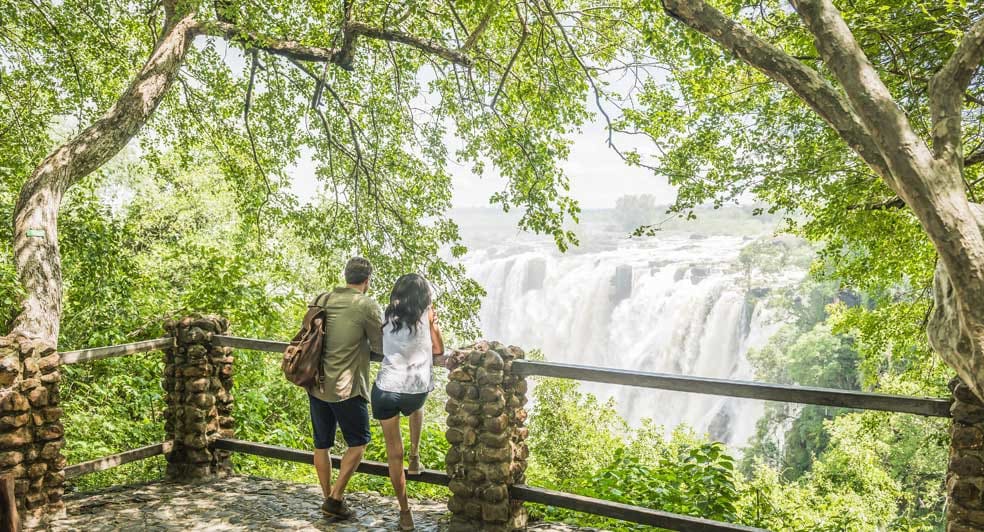How to Capture Stunning Photos at Victoria Falls – Perfect Pictures at Victoria Falls!
Victoria Falls isn’t just one view. It’s a shifting scene of light, spray, and sound that changes by the hour. You can stand in the same spot twice and still leave with completely different shots. That’s why preparation matters as much as your camera gear. Here is how you can best prepare to take stunning shots at Victoria Falls.
Plan for the Right Time and Conditions
The season shapes what you will see. During rainy months from late November to April, the spray can be so thick it hides the drop entirely. Make sure to select your place of stay early at a place such as Avani Victoria Falls Resort, so that you will be in close proximity to the falls. The resort even offers special packages for a Victoria Falls Helicopter Ride that provides a different, exciting view to capture pictures of the falls. If you want a clearer look at the rock face and the flow, visit during the drier window period of months around October or November.Light plays another role. Early morning brings softer shadows and a calm atmosphere. Late afternoons can produce rainbows arcing across the gorge if the sun catches the mist at the right angle. Standing there, you can feel the air shift and know a rainbow is about to appear.
Bring Gear That Matches Your Vision
If you want the whole sweep of the falls, a wide-angle lens in the 17–28mm range works well. Switch to a telephoto when you want to frame a single thundering section or wildlife resting by the riverbank. Neutral density filters slow down your shutter, giving the water that silky texture while letting you keep the exposure right. A polarising filter deepens the sky and helps rainbows pop. A tripod is essential for long exposures, though it’s useless if you forget to keep the lens dry.
Keep Your Camera Safe in the Spray
It’s almost impossible to avoid getting wet near the main viewpoints. A simple plastic cover or a rain sleeve will keep most of the mist off. Pack a few microfiber cloths so you can wipe the lens between shots—those water spots will ruin sharp details. Work quickly, then step aside to clean up before your next frame.
Look Beyond the Obvious
Everyone takes the straight-on shots. Move around. The falls run more than a mile, and each bend in the path offers a fresh perspective. Side angles catch the depth better than front-on views. During drier months, you can get lower and closer for compositions that show the cliff more clearly. If the scale overwhelms you, take overlapping shots and stitch a panorama later.
Experiment with Speed and Texture
A slower shutter—anything from a few tenths of a second to several seconds—turns the water into soft ribbons against the darker rock. It showcases motion at work without needing to see every drop. If you want to capture the raw power of the falls frozen in place, go the opposite way: a fast shutter to catch exploding spray and airborne droplets. Both approaches reveal a different take on the same place.
Use Scale to Tell the Story
Include something the viewer can relate to. A person on a viewing deck. A palm tree on Livingstone Island. A boat in the upper river. These elements give the falls a sense of size that pure water shots can’t convey.
Go Beyond the Falls
The Zambezi upstream is calm and reflective at sunrise, perfect for mirror-like landscapes. Wildlife moves slowly there—hippos lifting their heads, elephants crossing shallows. Downstream, the sunset is a great frame for the golden light behind the spray from a distance, giving you a gentler view of the same view with a different angle.

Image via Avani Victoria Falls Resort
Wait for the Moment
The mist doesn’t stay still for anyone; you might watch the falls disappear into a dense cloud, then open up minutes later as the wind shifts. Sometimes you need to stand in one spot and simply wait for that gap, that beam of light, that rainbow to form. Patience often wins over constant movement.A visit to Victoria Falls is never just about one photograph. It’s how you work with the elements—the light, the water, the spray—that shapes what you bring home. The gear you carry matters, but so does the time you take to watch before you press the shutter.
